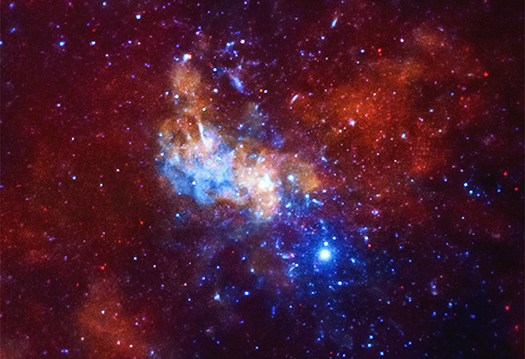
Our Galaxy is shaped like a whirlpool, with long strips of cosmic gas and dust swirling around the center. And like a whirlpool, objects that float too close are dragged into the center never to be seen again.
The fate of these unfortunate objects is no mystery. Lurking in the dark at the heart of our Galaxy is gigantic, hungry monster - a supermassive black hole.
Supermassive black holes are famous for their ability to swallow anything - even light! But they don't just eat; they sometimes spit too!.
In late 2013, an outburst (what astronomers call 'flares') was spotted blasting from the center of our Galaxy. Like many flares, it was made up of high-energy X-rays. However, this particular outburst was 400 times brighter than the X-ray output normally seen coming from this black hole!
A little more than a year later, it let off another flare, this time it was 200 times brighter than usual.
Astronomers have two theories about what could be causing these so-called "megaflares". The first idea is that the black hole's strong gravity tore apart an asteroid that strayed too close. The debris was then heated to millions of degrees before being devoured.
The other possible explanation involves the strong magnetic fields around the black hole. If these magnetic fields wobbled somehow, it could cause a large burst of X-rays. In fact, such events are seen regularly on our own Sun, we call them solar flares.
The main part of this picture shows the area around the supermassive black hole at the center of our Galaxy, called Sagittarius A* (pronounced as "SAJ-ee-TARE-ee-us A-star"). The small box shows close up of the black hole and the giant flare from 2013.
Cool fact: Sagittarius A* is about 4.5 million times more massive then our Sun!
Watch the video podcast
Do you want to learn more about this topic?
Visit the Chandra field guide or send us your questions in an email: cxcpub@cfa.harvard.edu
In cooperation with Space Scoop: Bringing news from across the Universe to children all around the world. Universe Awareness and the Chandra X-ray Observatory
| Children & Online Privacy |



